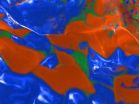Johns Hopkins education leaders call for radical transformation in graduate biomedical curriculum
Current teaching structure hasn’t changed in 30 years
2011-08-19
(Press-News.org) Leaders in biomedical education at Johns Hopkins University School of Medicine are calling for a radical new approach to post-graduate training in the life sciences to address significant challenges, including an avalanche of new discoveries in the last decade and the need to transcend traditional departmental boundaries to understand biological processes at multiple levels.
In a Leading Edge commentary published in the August 19, 2011 edition of Cell, the authors present a new model for biomedical education that would break down current silos of particular disciplines, such as biochemistry, cell biology and physiology, and instead teach students to work across those disciplines to study organisms at all levels, from molecules and cells to an entire organism.
"Increasingly, scientists need a multi-disciplinary approach to answer important questions. They must have the ability to use and interpret information from a wide variety of fields. The current framework for advanced biomedical education, which hasn't changed much in three decades, is no longer suited to helping students integrate the vast amount of knowledge on fundamental biological processes," says David G. Nichols, M.D., M.B.A., vice dean for education at Johns Hopkins who co-authored the commentary.
Currently, most biomedical graduate programs teach first year students in separate silos, giving them separate courses in biochemistry, cell biology, physiology, and so on. The proposed new model would instead divide biology up into the key underlying processes - gene expression, metabolism and cell fate and function. Instructors would teach each of these key processes, or "nodes," in an integrated bottom-to-top manner, incorporating important information from the molecular scale all the way up to the whole organism.
A second major component of the new curriculum would be a year-long, hands-on course in methods and techniques, providing students with skills to pursue their research interests.
"We think the new curriculum would create a valuable foundation for today's graduate students in the life sciences," says co-author Jon R. Lorsch, a professor in the Department of Biophysics and Biophysical Chemistry. "Organizing the material into nodes, which is the way biological systems are actually arranged, will help students retain more of what they learn, and the techniques course will prime them to tackle fundamental biological questions with whatever methods are required."
The proposal follows an innovative curriculum that was implemented for medical students by Johns Hopkins University School of Medicine in 2009, called Genes to Society. The changes were designed to encourage students to see patients in a larger context, integrating the biological and physical aspects with the social, cultural, psychological and environmental variables that also affect their health. Such integration is viewed as critical to realizing the promise of personalized medicine, which was made possible by the human genome project.
"Our proposal represents a significant departure from the traditional way of teaching the life sciences to graduate students," says Lorsch. "Just as the Genes to Society curriculum for medical students addressed the challenges and opportunities facing medicine in the coming decades, our new framework for graduate education responds to the rapidly changing landscape of biomedical research."
Lorsch adds, however, that their proposed new model, along with similar frameworks, would need to be tested to determine if they achieve the desired results, which wouldn't be an easy task since there are currently no standardized methods for assessing the effectiveness of graduate biomedical education.
"Our main goal is to stimulate new thinking about advanced life sciences education," says Nichols. "We believe significant changes are necessary in order to adequately prepare today's students to keep up with rapidly changing information and advances. These changes should also promote collaboration among scientists in different fields and between scientists and clinicians, as these sorts of collaborations provide the basis for scientific and medical breakthroughs."
### END
ELSE PRESS RELEASES FROM THIS DATE:
Public radio exposes injustice
2011-08-19
Malawian villagers have found an unlikely platform to expose injustice and abuse of power and bring their leaders to task, according to research funded by the Economic and Social Research Council (ESRC). Malawi's public radio station broadcasts are providing an alternative programme of news stories. The programme features contributions by ordinary Malawians, highlighting their everyday experiences of abuse and violation.
In a country where radio is the main form of mass media, the daily programme broadcast in Chichewa, the language spoken by most Malawians, has become ...
Cancer stem cells made, not born
2011-08-19
In cancer, tumors aren't uniform: they are more like complex societies, each with a unique balance of cancer cell types playing different roles. Understanding this "social structure" of tumors is critical for treatment decisions in the clinic because different cell types may be sensitive to different drugs. A common theory is that tumors are a hierarchical society, in which all cancer cells descend from special self-renewing cancer stem cells. This view predicts that killing the cancer stem cells might suffice to wipe out a cancer.
New findings by scientists at the Broad ...
UCI researchers chart long-shrouded glacial reaches of Antarctica
2011-08-19
Irvine, Calif. — A vast network of previously unmapped glaciers on the move from thousands of miles inland to the Antarctic coast has been charted for the first time by UC Irvine scientists (http://www.ess.uci.edu/). The findings will be critical to tracking future sea rise from climate change.
"This is like seeing a map of all the oceans' currents for the first time. It's a game changer for glaciology," said UCI earth system science professor Eric Rignot, lead author of a paper on the ice flow published online today in Science Express. "We're seeing amazing flows from ...
Molecular meet and greet
2011-08-19
Boston, Mass. (Aug. 19, 2011)—Researchers at Harvard Medical School have discovered that structural elements in the cell play a crucial role in organizing the motion of cell-surface receptors, proteins that enable cells to receive signals from other parts of the organism.
This discovery, published in the Aug. 19 issue of the journal Cell, fills a fundamental gap in the understanding of how cells relate to biochemical signals, including pharmaceuticals, and could have profound implications for drug development and the treatment of cancer and other diseases.
The findings ...
Kidney drugs hampered by high blood phosphate
2011-08-19
Washington, DC (August 18, 2011) — High blood phosphate levels can set chronic kidney disease (CKD) patients on a rapid path to kidney failure, according to a study appearing in an upcoming issue of the Journal of the American Society Nephrology (JASN). To make matters worse, phosphate appears to interfere with the effectiveness of important kidney medications.
The kidneys of patients with CKD cannot efficiently get rid of wastes such as excess phosphate in the blood. As a result, the kidneys become overloaded with phosphate. Carmine Zoccali, MD (CNR-IBIM, Clinical Epidemiology ...
New 'bionic' leg gives amputees a natural gait
2011-08-19
A new lower-limb prosthetic developed at Vanderbilt University allows amputees to walk without the leg-dragging gait characteristic of conventional artificial legs.
The device uses the latest advances in computer, sensor, electric motor and battery technology to give it bionic capabilities: It is the first prosthetic with powered knee and ankle joints that operate in unison. It comes equipped with sensors that monitor its user's motion. It has microprocessors programmed to use this data to predict what the person is trying to do and operate the device in ways that facilitate ...
Robust preschool experience offers lasting effects on language and literacy
2011-08-19
Preschool teachers' use of sophisticated vocabulary and analytic talk about books combined with early support for literacy in the home can predict fourth-grade reading comprehension and word recognition, new research from Vanderbilt University's Peabody College finds.
The findings, published in Child Development and included in a review article in the August 19, 2011 edition of Science, present evidence that there are lasting, complex and mutually reinforcing effects that flow from strong early childhood classrooms.
"We need to take very seriously the importance ...
Parents misled by advocates of single-sex education
2011-08-19
There is no scientific basis for teaching boys and girls separately, according to Lise Eliot from The Chicago Medical School. Her review reveals fundamental flaws in the arguments put forward by proponents of single-sex schools to justify the need of teaching teach boys and girls separately. Eliot shows that neuroscience has identified few reliable differences between boys' and girls' brains relevant to learning or education. Her work is published online in Springer's journal Sex Roles.
The first issue Eliot highlights is that single-sex school advocates often claim differences ...
Treatment with vitamin C dissolves toxic protein aggregates in Alzheimer's disease
2011-08-19
Researchers at Lund University have discovered a new function for vitamin C. Treatment with vitamin C can dissolve the toxic protein aggregates that build up in the brain in Alzheimer's disease. The research findings are now being presented in the Journal of Biological Chemistry.
The brains of people with Alzheimer's disease contain lumps of so-called amyloid plaques which consist of misfolded protein aggregates. They cause nerve cell death in the brain and the first nerves to be attacked are the ones in the brain's memory centre.
"When we treated brain tissue from ...
Are those liquids explosive?
2011-08-19
A team of researchers from the University of the Basque Country (Spain) has developed a method to determine the chemical composition of liquids seized by police and suspected to be explosive. Some of the samples analysed contained substances hazardous to health, such as methanol and boric acid.
Each year police forces seize tonnes of pyrotechnic substances which, in principle, are for indoor firework manufacturing (i.e. flares or those used in artistic or sporting events), but which also may end up in the hands of violent groups and hooligans.
A group of chemists from ...
LAST 30 PRESS RELEASES:
Norbert Holtkamp appointed director of Fermi National Accelerator Laboratory
New agentic AI platform accelerates advanced optics design
Biologists discover neurons use physical signals — not electricity — to stabilize communication
Researchers discover that a hormone can access the brain by hitchhiking
University of Oklahoma researcher awarded funding to pursue AI-powered material design
Exploring how the visual system recovers following injury
Support for parents with infants at pediatric check-ups leads to better reading and math skills in elementary school
Kids’ behavioral health is a growing share of family health costs
Day & night: Cancer disrupts the brain’s natural rhythm
COVID-19 vaccination significantly reduces risk to pregnant women and baby
The role of vaccination in maternal and perinatal outcomes associated with COVID-19 in pregnancy
Mayo Clinic smartwatch system helps parents shorten and defuse children's severe tantrums early
Behavioral health spending spikes to 40% of all children’s health expenditures, nearly doubling in a decade
Digital cognitive behavioral treatment for generalized anxiety disorder
Expenditures for pediatric behavioral health care over time and estimated family financial burden
Air conditioning in nursing homes and mortality during extreme heat
The Alps to lose a record number of glaciers in the next decade
What makes a good proton conductor?
New science reporting guide published for journalists in Bulgaria
New international study reveals major survival gaps among children with cancer
New science reporting guide published for journalists in Turkey
Scientists develop a smarter mRNA therapy that knows which cells to target
Neuroanatomy-informed brain–machine hybrid intelligence for robust acoustic target detection
Eight SwRI hydrogen projects funded by ENERGYWERX
The Lundquist Institute and its start-up company Vitalex Biosciences Announces Strategic Advancement of Second-Generation fungal Vaccine VXV-01 through Phase 1 Trials under $40 Million Competitive Con
Fine particles in pollution are associated with early signs of autoimmune disease
Review article | Towards a Global Ground-Based Earth Observatory (GGBEO): Leveraging existing systems and networks
Penn and UMich create world’s smallest programmable, autonomous robots
Cleveland researchers launch first major study to address ‘hidden performance killer’ in athletes
To connect across politics, try saying what you oppose
[Press-News.org] Johns Hopkins education leaders call for radical transformation in graduate biomedical curriculumCurrent teaching structure hasn’t changed in 30 years


